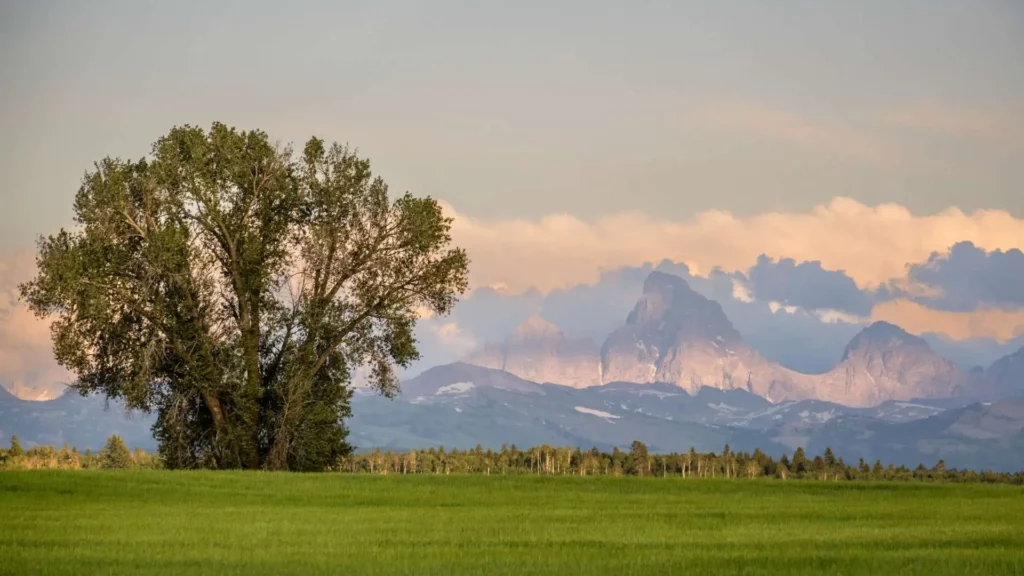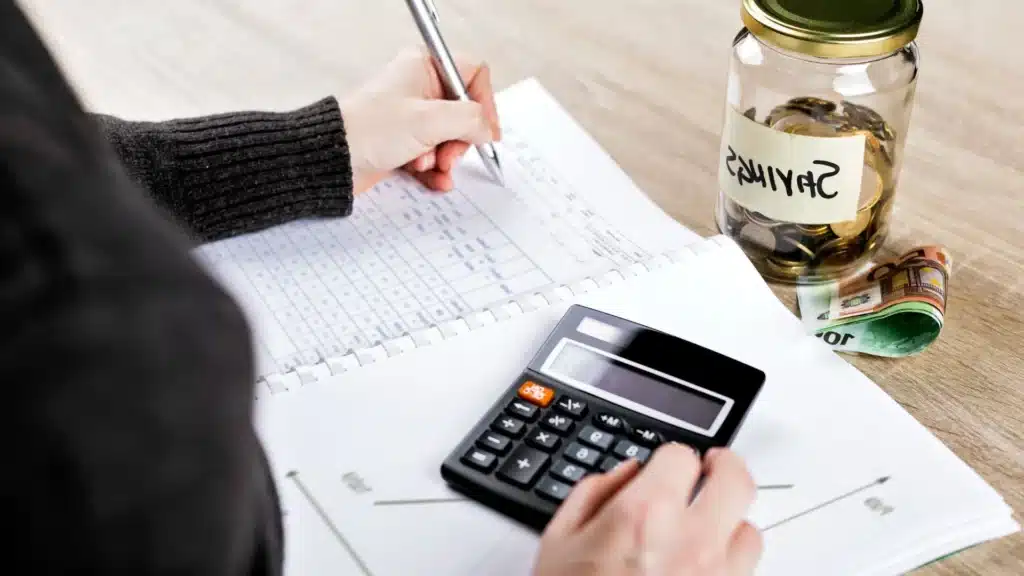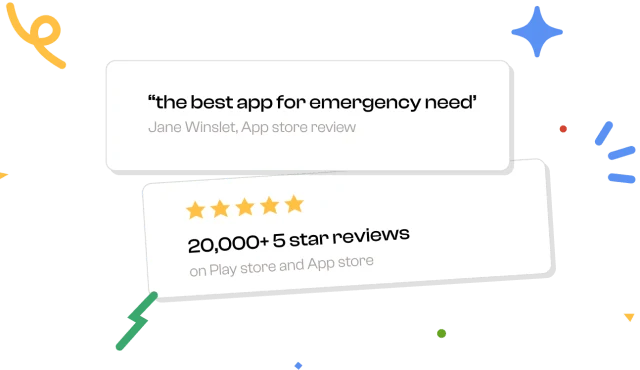Table of Contents
Understanding living costs goes beyond numbers. It’s about finding the right lifestyle. With planning and the right tools, you can enjoy Montana’s offerings without overspending. What is the cost of living in Montana? Whether you’re moving, budgeting, or just curious, we explore this question.
Montana combines affordable living with beautiful nature. Housing and costs vary by area, yet the state draws those seeking a peaceful, fulfilling life. It also offers low transportation costs and many outdoor activities, enhancing its appeal. Yet, Montana’s appeal goes beyond costs. Its lifestyle, with access to nature and a slower pace, is a big draw.
What Is the Cost of Living in Montana?
The average annual cost of living in Montana is about $47,887 per person. Housing is 1% above average, but utilities are 7% lower. Groceries and clothing are about 3% more expensive.
Healthcare matches the national average. There are no significant differences between doctor and dental visits. However, entertainment and grooming costs are 3% higher. So, budgeting for these is crucial. Yet, Montana’s absence of a sales tax and high quality of life make it appealing.
Read Related Article: What is the Cost of Living in Kansas?
What Are Housing Costs in Montana?
Housing costs in Montana significantly impact the cost of living. The median home price is about $427,886 but varies by city.
For instance:
- Bozeman: $647,146.
- Missoula: $517,660.
- Billings: $371,299.
- Great Falls: $288,396.
- Butte: $259,666.
These show that location is key in budgeting for housing.
How Much Taxes Do I Pay in Montana?
Nevertheless, Montana does not apply a statewide sales tax, which lowers the cost of goods and services. However, its income tax ranges from 1% to 6.9% based on earnings, ensuring that richer residents pay more.
Compared to nearby states, Montana’s rates are competitive:
- North Dakota: 1.1%–2.9%.
- Idaho: 1.125%–6.925%.
- South Dakota and Wyoming: No income tax.
How to Manage the Cost of Living in Montana?
- Choose Housing Wisely: Housing costs differ in Montana. Consider affordable places like Great Falls or Butte. Renting is good for newcomers, but buying might be better if you plan to stay.
- Reduce Transportation Costs: Transportation costs can add up. Consider a fuel-efficient car, carpooling, or biking. Limit trips to save on fuel.
- Invest in Health: Healthcare can be costly. A healthy lifestyle reduces medical bills. Consider health savings accounts or affordable insurance for basic needs.
- Leverage Local Resources: Enjoy community events, farmers’ markets, and state parks for affordable fun and shopping. These resources align with Montana’s outdoor lifestyle.
- Budget for Utilities: Montana’s winters can raise heating costs. To lower bills, improve insulation, and use energy-efficient appliances. Always budget for seasonal changes and look for energy assistance programs.
- Embrace DIY Solutions: Save money by doing tasks yourself. Learn gardening, basic repairs, or how to make your gear. This taps into Montana’s self-reliance culture.
- Plan for Recreation: Montana offers many outdoor activities. Budget for recreation by buying a state park pass or finding free spots. This way, you can enjoy nature without overspending.
- Practice Minimalism: A minimalist approach reduces costs. Buy only what’s necessary. This helps save money and reduces clutter. It also shifts focus from material things to experiences.
Read Related Article: What is the Cost of Living in Minnesota?
Utility Expenses in Montana: What to Expect
The average utility cost in Montana is $379, which is 7% lower than the national average. This includes:
- Electricity and heating: $97.84.
- Water: $38.
- Internet: $45.
- Natural gas: $37.
- Phone: $114.
Cold winters can raise heating costs, so budgets should account for this. However, mild summers can lower overall costs. Montana’s low utility rates enhance its appeal. Households benefit financially. With energy efficiency, residents can cut bills further, keeping utilities affordable.
Grocery Prices and Food Costs in Montana
Grocery costs in Montana are just above the national average. The average American spends about $588.
Here are some typical grocery prices:
- Milk (1 liter): $1
- Bread (0.5 kg): $2.96
- Eggs (12): $3.32
- Chicken breast (1 kg): $11.90
- Potatoes (1 kg): $1.74
Dining out in Montana is reasonably priced. Though food prices are slightly higher, Montana’s local produce and dining options offer diverse, quality choices, enhancing the state’s culinary experience.
Transportation Costs in Montana
Transportation costs in Montana match the national average. With limited public transport, residents often need a car. A single adult with no children can expect to pay upwards of $5,300. These costs cover:
- Monthly ticket for local transport: $36.90.
- Taxis Ride, 8 km: $20.40.
- Fuel: $0.90 per liter.
- Maintenance and repairs for tough terrains.
Winter adds to these costs. Budgeting for fuel, maintenance, and upgrades is vital to handle Montana’s driving challenges.
How Much Does Healthcare Cost in Montana?
In Montana, healthcare costs depend on needs, family size, and insurance. Here are the average annual costs:
- Single adult: $2,675.
- Single adult with one child: $8,571.
- Family of four: $8,507.
Having good health insurance is vital for managing costs and accessing care. Living near medical facilities also affects expenses, making urban centers more appealing for those needing frequent care.
What are Education and Childcare Costs in Montana?
Education and childcare are key financial factors for Montana families. However, childcare costs about $9,589 a year for one child. These figures cover daycare or preschool, depending on location and quality.
Private international primary schools are expensive, averaging $19,523 a year. In contrast, public schools offer free, quality education.
Read Related Article: What is the Cost of Living in South Dakota?

Entertainment and Leisure Expenses in Montana
Montana has beautiful scenery, and many people like participating in low-cost activities. Here are some expenses:
- Visiting parks like Glacier and Yellowstone costs $20 per vehicle.
- Movie ticket: $12.90.
- Gym membership: $49.90 monthly.
- Dining out: $63.80.
How Much Does it Cost to Live in Montana?
Montana’s living costs are about 1% above the national average. Housing and groceries are pricier. However, energy, transportation, and medical costs are lower. This balance makes Montana attractive for those seeking affordable quality of life.
The average monthly expenses per person, including accommodation, food, and other bills, are $2,030. For four family members, the amount increases to around $5,079. However, prices vary widely across Montana. Bigger cities like Bozeman and Missoula have higher housing costs. In contrast, smaller towns offer more affordable options.
How Beem Can Help Manage Costs in Montana
Managing living costs in Montana is easier with the right tools. Beem’s BFF Budget Planner lets you spend, save, plan, and protect your money like an expert with on-point financial insights and recommendations in Montana. By monitoring spending, users can spot saving opportunities. Beem also provides local insights. It shows various cities’ average rent, utilities, transport, and grocery costs, helping users create personalized plans. Download the app here!
Beem also supports long-term planning. Whether saving for a home, healthcare, or education, its tools guide users. This makes informed decisions easier. Beem helps Montanans manage their finances and reduce living costs.
Read Related Article: What is the Cost of Living in Connecticut?
Conclusion
Montana combines affordability with a good quality of life. The cost of living in Montana is similar to the national average. Housing and groceries are pricier. However, you can save on utilities and transportation. The benefits often surpass the costs for fans of the state’s beauty and outdoor activities.
If you’re moving or want to manage your finances better, consider Beem. This platform helps track spending, set goals, and manage budgets easily. It’s perfect for anyone in Montana or elsewhere. Try Beem and find options to budget your funds, monitor and grow credit scores, and more!
FAQs for What is the Cost of Living in Montana
What is the average cost of living in Montana?
Montana’s living costs are about 1% above the national average. A single person spends roughly $2,030 monthly, while a family of four spends about $5,079. Key expenses include housing, groceries, and healthcare. Yet utilities and transportation are quite affordable.
How do housing costs in Montana compare to the national average?
The median home costs about $427,886. In cities like Bozeman and Missoula, prices soar higher. Rent varies, too. A two-bedroom apartment in Billings is around $900. In pricier areas, rent climbs.
Are utilities expensive in Montana?
Montana’s utility costs are 7% less than the national average. The utility charge for most residents is around $379. However, the cold climate may raise heating costs in winter.
What are the transportation options and costs in Montana?
Montana mainly relies on personal vehicles for transportation. Public transport is limited. A single adult’s monthly transport cost is about $5,300. Per year. Gas is around $0.90 per liter. A taxi ride for 8 kilometers costs about $20.
How much should I budget for groceries in Montana?
Montana’s grocery prices are slightly above the national average. A single person spends about $588 monthly, and a family of four averages $1,530. Planning meals and shopping wisely can save money.





























